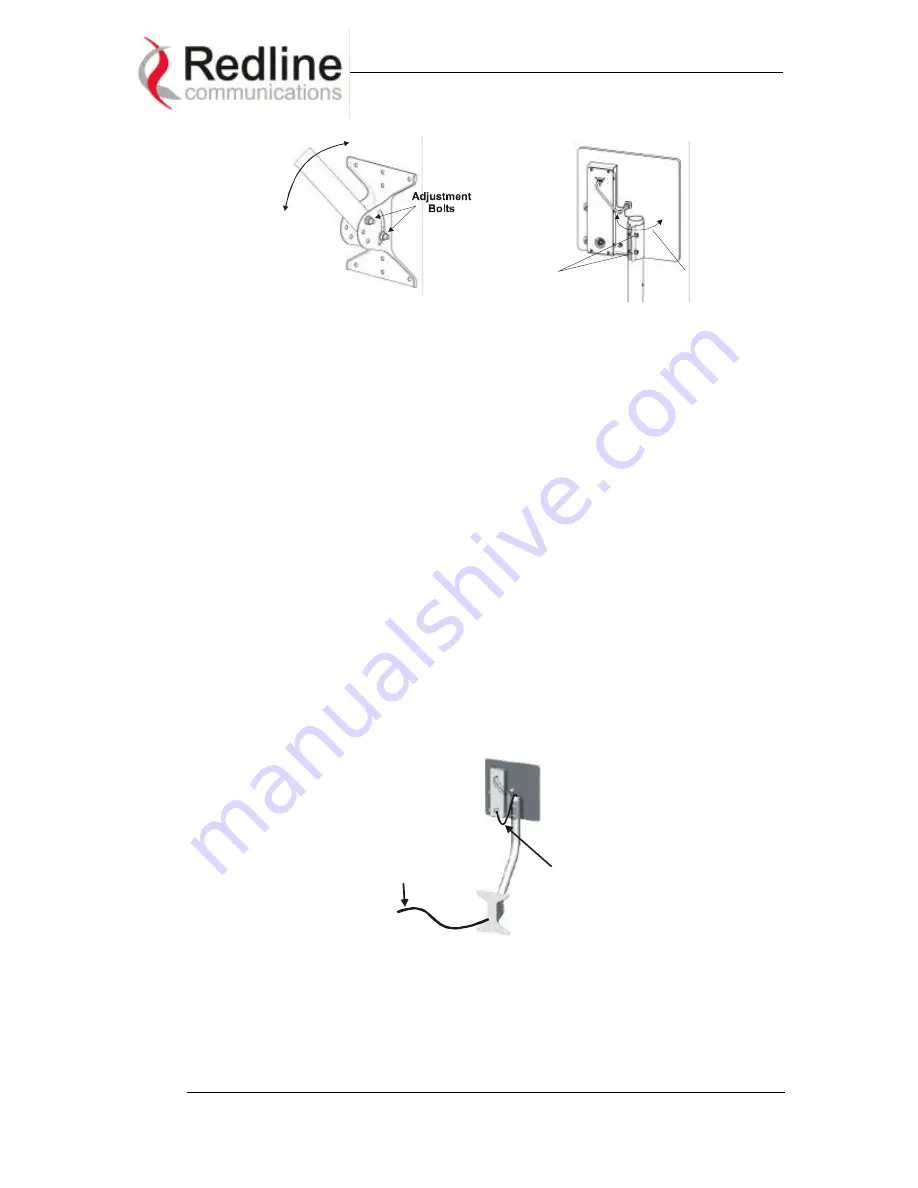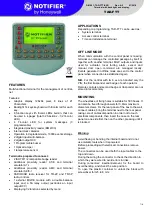
AN-50 User Manual
16/52
Red
line Communications
…..solving the first mile challenge
.
Elevation
Adjustment
Adjustment
Bolts
Azimuth
Adjustment
Figure 6 Aligning the antenna.
Note that the antenna can also be mounted onto another pole separate from the
one supplied with the system. Contact Redline for different antenna mounting
options.
5.3.
Running the IF Cable
The system is equipped with a 100 foot of RF cable to interconnect the transceiver
and terminal. The following steps define the cable installation:
1. Run the cable through the antenna pole as shown below. Add extra cable
length to produce a drip-loop, as shown, to prevent water from
accumulating onto the connector. The IF cable is equipped with 75 ohm
F-type connectors at both ends, however, it is important to note that one
end of the cable is designated for outdoors, as it is a specialized weather
proof design, while the other end is to be connected to the indoor terminal
unit. A label is attached to one end of the cable to clearly indicate the
connector that is intended for outdoors. Make certain the ‘Outdoor’ label
is attached to the end of the cable that you plan to connect to the radio.
IF
Cable
Cable
Drip-Loop
2. Connect the F-type male connector from the cable to the female connector
attached to at the bottom of the transceiver. Note the connector at the top
end of the transceiver is connected via cable to the antenna itself.


























